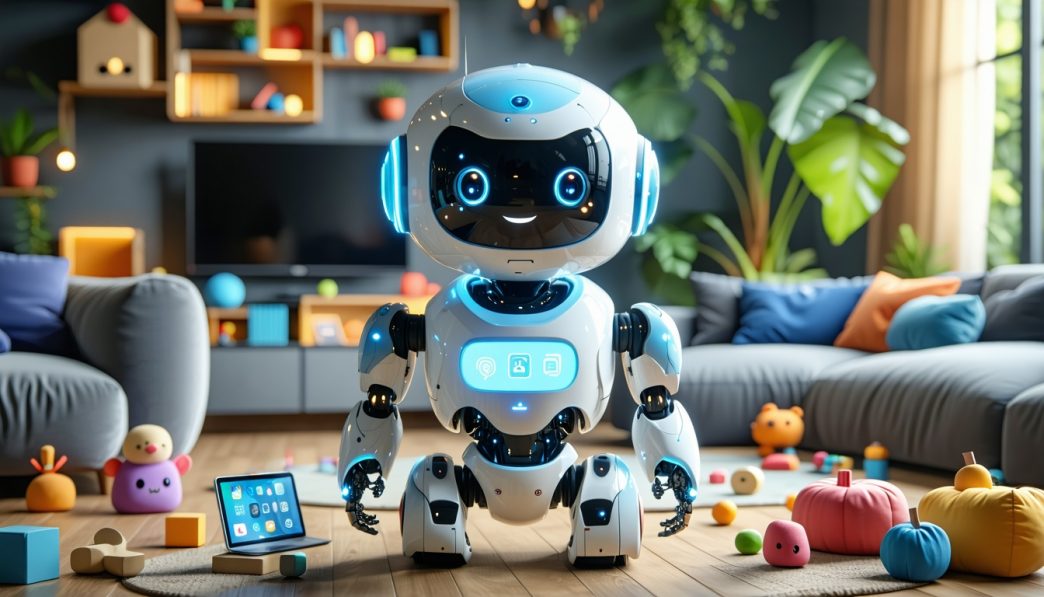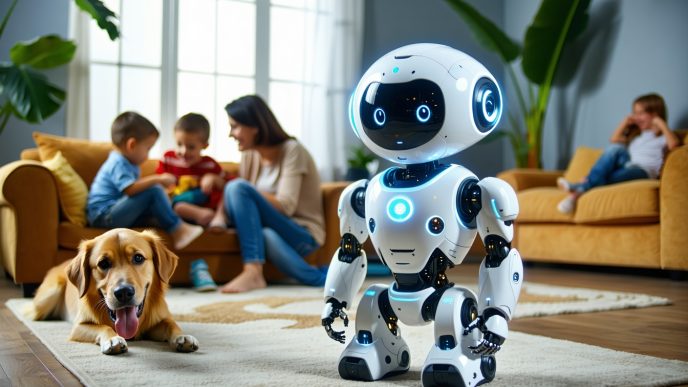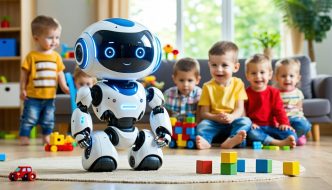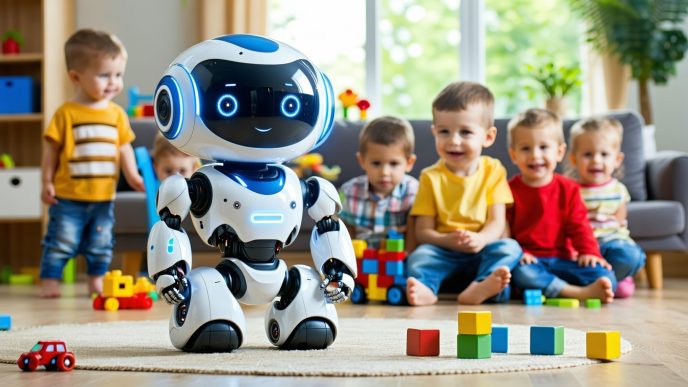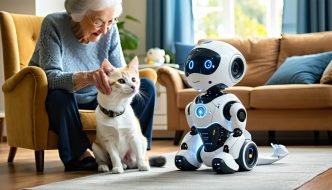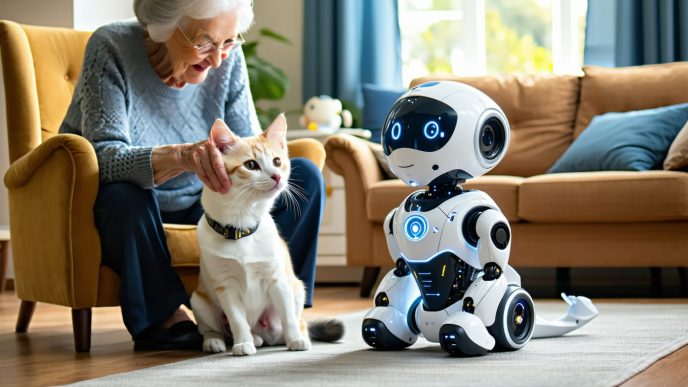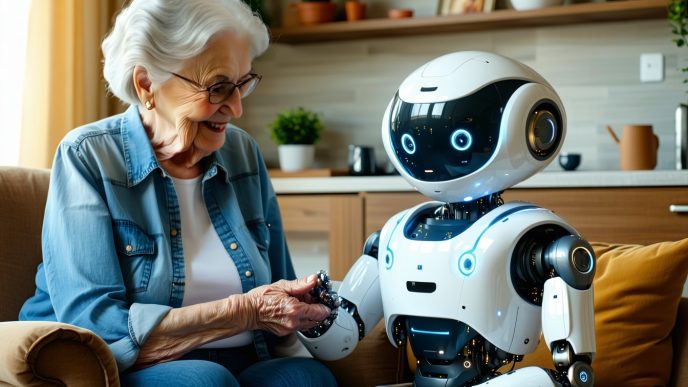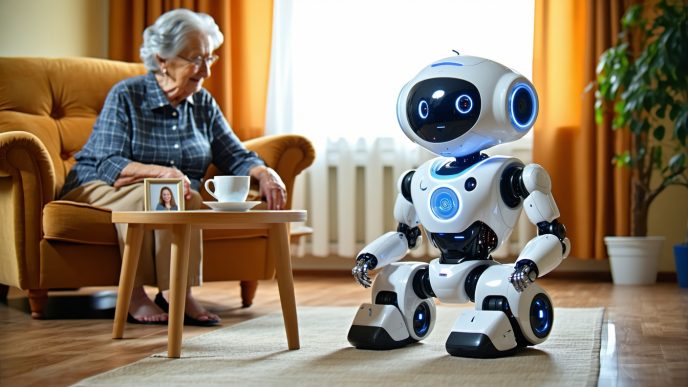The Role of Companion Robots
Understanding Companion Robots
Companion robots serve as social entities designed to engage and interact with humans. They aim to provide emotional support and companionship, particularly for individuals experiencing loneliness, isolation, or the challenges of aging. These robots can be humanoid or non-humanoid in shape and are equipped with specialized software to establish communication through voice, gestures, and sometimes even facial expressions.
The primary function of companion robots is to facilitate interaction, enabling users to experience companionship similar to pet ownership or friendships. They can help enhance the quality of life for many individuals, especially for those who might benefit from reduced loneliness, such as elderly patients or caregivers. For a deeper understanding, explore our article on companion robots.
Importance of Emotional Connections
Emotional connectivity is crucial in the design of companion robots. Establishing a bond between the user and the robot can significantly increase the effectiveness of the robot’s role as a companion. Users are more likely to engage with and find comfort in robots that exhibit relatable personalities and emotional responses.
| Emotional Connection Benefits | Description |
|---|---|
| Reduces Loneliness | Companion robots can provide an ongoing source of interaction, helping combat feelings of isolation. |
| Enhances Well-being | Emotional engagements with robots can contribute to improved mental and emotional health. |
| Alleviates Stress | Interacting with a companion robot can be relaxing, reducing anxiety levels for users. |
Research indicates that users often have a favorable response to robots that exhibit traits of empathy and understanding, making it essential for designers to focus on companion robot design and personality. Emotional connections can lead to a better user experience, especially in settings such as assisted living facilities or for individuals experiencing mental health challenges. Such robots can play an instrumental role as a part of therapy, particularly in programs aimed at patients with dementia or for those seeking support in maintaining mental health. Additional insights on this can be found in our articles on robot companions for mental health and companion robots for dementia patients.
By prioritizing emotional connections through thoughtful design, companion robots can become a valuable asset in caregiving and enhance the overall quality of life for those they serve.
Designing Personality in Social Robots
Creating a successful companion robot involves thoughtful consideration of its personality traits. The design of these traits significantly impacts how individuals interact with and relate to the robot.
The Significance of Personality Design
Personality design plays a pivotal role in shaping user experiences with companion robots. A well-designed personality can enhance emotional connections, making users feel more at ease and engaged in interactions. As social robots become more integrated into daily life, their personality traits can influence the effectiveness of their roles, such as providing support for mental health, companionship for aging family members, or assistance in healthcare settings.
Research has shown that a relatable personality can greatly improve user satisfaction. Robots that exhibit warmth, empathy, and friendliness tend to foster stronger emotional bonds. This is especially important for companion robots in assisted living or for those seeking robot companions for mental health.
Factors Influencing Personality
Several factors contribute to the personality design of social robots. Understanding these elements helps designers create robots that resonate more effectively with users. Key factors include:
| Factor | Description |
|---|---|
| User Demographics | Age, cultural background, and personal preferences can shape expectations for robot interactions. |
| Context of Use | The environment in which the robot will operate influences personality traits. For instance, robots designed for healthcare may require a more nurturing persona. |
| Interaction Type | The nature of the interaction, whether playful or serious, can dictate the personality traits incorporated into the robot’s design. |
| Technological Capabilities | The underlying technology of the robot, such as AI capabilities, impacts how well it can imitate human-like interactions and emotional expressions. |
For example, robots designed for children, like companion robots for children, may prioritize playfulness and humor, while those aimed at supporting seniors, such as robot pets for seniors, may focus more on warmth and compassion.
Designers must also consider the implications of human-robot bonding and how a robot’s personality can foster trust and rapport. Ultimately, integrating these factors into the design process leads to more effective and relatable companion robots.
Benefits of Personality Design
The design and personality of companion robots play a significant role in shaping user experiences and fostering connections. Understanding these benefits can illuminate how companion robots can significantly enhance emotional companionship and support.
Enhancing User Engagement
Well-designed companion robots can capture and maintain user interest far more effectively than generic robots. The personality traits programmed into these robots greatly influence how individuals interact with them. For instance, robots that exhibit warmth, humor, and relatability tend to be more engaging.
| Personality Traits | Level of User Engagement |
|---|---|
| Humor | High |
| Warmth | High |
| Intelligence | Moderate |
| Formality | Low |
Studies show that robots with engaging personalities encourage users to participate in activities, enhancing the overall user experience. This can be particularly beneficial for robot companions for mental health or enhancing interactions in companion robots in assisted living.
Increasing Emotional Attachment
An essential benefit of effective personality design is the development of emotional bonds between users and robots. When robots are designed with traits that evoke empathy, sensitivity, and understanding, users are more inclined to form attachments. This emotional connection plays a critical role in how users perceive their robotic counterparts.
| Robot Personality Traits | Impact on Emotional Attachment |
|---|---|
| Empathy | Strong |
| Compassion | Strong |
| Adaptability | Moderate |
| Humor | Moderate |
The emotional attachment fostered through these connections can be beneficial for individuals who may struggle with loneliness or social interaction. This is particularly relevant for robot pets for seniors or companion robots for dementia patients, who may derive comfort from the presence of a responsive and understanding companion. Additionally, humans tend to experience a sense of security when engaging with emotionally intelligent machines, making the relationship more meaningful.
Investing in personality design for companion robots not only enhances user engagement but also strengthens emotional bonds, enriching life for those who interact with them. This interaction opens doors for further developments in social robotics, including ai powered emotional robots that can adapt and respond to user needs more effectively.
Ethical Considerations
The development and integration of companion robots bring forward important ethical considerations. Understanding these implications is crucial for ensuring that these technologies are designed responsibly, especially as they become more integrated into everyday life.
Implications of Human-Robot Interaction
As companion robots interact with humans, their ability to create emotional bonds can significantly impact users’ well-being. The nature of this interaction raises questions about dependency, emotional authenticity, and trust. Users may begin to rely on robots for companionship, which can result in a range of psychological effects.
For instance, researchers have identified potential emotional repercussions when individuals form attachments to robots, as illustrated in the table below:
| Emotional Impact | Description |
|---|---|
| Loneliness Reduction | Robots can mitigate feelings of loneliness, especially in elderly populations. |
| Dependency Concerns | Over-reliance on robots may hinder social interactions with other humans. |
| Trust Issues | Users may struggle to differentiate between genuine emotional connections and programmed responses from a robot. |
Developers of companion robots must balance these implications to create positive user experiences while minimizing adverse effects. Ethical guidelines are essential to navigate the complexities of these human-robot relationships, especially in specialized environments like companion robots in assisted living.
Ensuring Responsible Design
Responsible design in companion robot technology is foundational to addressing ethical concerns. This includes creating robots that are safe, effective, and aligned with users’ emotional and social needs. Key aspects of responsible design include:
-
Transparency: Users should understand the limitations of robots. Clear communication about the robot’s capabilities and its nature as a machine can help manage expectations.
-
User Privacy: As robots collect data to foster better interactions, protecting user privacy is paramount. Developers must implement stringent measures to safeguard personal information and ensure ethical data usage.
-
Inclusion: Design processes should consider diverse user needs. This involves accommodating different age groups, cultural backgrounds, and specific mental health requirements, such as those of companion robots for dementia patients or robot companions for mental health.
Through thoughtful consideration of these factors, the field can move towards creating companion robots that enhance emotional connections while being mindful of the ethical dimensions of their use. Understanding the importance of human-robot bonding will further support responsible and impactful designs in this innovative area.
Types of Personality Traits
The design and personality of companion robots significantly influence their effectiveness in providing emotional support and companionship. Various personality traits contribute to how users perceive and interact with these robots. This section outlines key traits that enhance the user experience.
Empathy and Compassion
Robots designed with empathy and compassion are more likely to form meaningful connections with users. These traits enable the robot to respond sensitively to emotional cues, making interactions feel more human-like and genuine. Empathic robots can help reduce feelings of loneliness and anxiety, particularly in vulnerable populations, such as the elderly and those with mental health concerns. Studies show that users tend to engage more with robots demonstrating understanding and emotional responsiveness.
| Trait | Impact |
|---|---|
| Empathy | Eases emotional distress |
| Compassion | Fosters a sense of care and support |
For more on how robots help with emotional support, visit our article on robot companions for mental health.
Intelligence and Humor
Intelligence in companion robots fosters engaging and stimulating interactions. Incorporating humor into the robot’s personality can create a light-hearted atmosphere, enhancing user enjoyment. A robot that can understand jokes or respond playfully adds an element of fun to the interaction, making users more likely to develop a positive emotional connection.
| Trait | Benefits |
|---|---|
| Intelligence | Stimulates cognitive engagement |
| Humor | Enhances enjoyment and relatability |
For examples of intelligent robots, check our article on ai powered emotional robots.
Adaptability and Sensitivity
Adaptable robots can adjust their behavior according to the user’s mood or preferences. This flexibility leads to more personalized interactions, making users feel understood and valued. Sensitivity to the user’s emotional state allows the robot to provide appropriate responses, whether it’s offering comfort, engaging in conversation, or suggesting activities.
| Trait | Advantages |
|---|---|
| Adaptability | Creates tailored user experiences |
| Sensitivity | Recognizes and responds to user emotions |
Learn more about how adaptability features are applied in companion robots in assisted living.
Customization and Personalization
Customizable robots enhance user satisfaction by allowing individuals to modify personality traits according to their preferences. Personalization can include name changes, preferred conversation topics, and communication styles. Such custom features foster a deeper sense of ownership and attachment to the robot.
| Trait | Customization Options |
|---|---|
| Customization | Names, appearances, functions |
| Personalization | Preferred interactions, themes |
For insights on tailored experiences, read our section on human robot bonding.
Incorporating a diverse range of personality traits into companion robots is essential for their effectiveness in providing emotional support and companionship. Understanding these traits and their implications can help guide the development of more engaging and beneficial robots for users, including children and seniors. For further exploration of specific types of companion robots and their functionalities, visit our relevant articles on companion robots and robot pets for seniors.
Implementing Personality Design
The implementation of personality design in companion robots is crucial for fostering meaningful interactions and enhancing user experiences. This section explores how personality traits can be programmed, the role of user feedback, and the gradual evolution of robot personalities.
Programming Personality Traits
Programming personality traits into companion robots requires careful consideration of how these traits influence user interactions. Personality can be infused through various mechanisms such as voice modulation, facial expressions, and response patterns. Developers often utilize predefined templates based on human personality traits like friendliness, responsiveness, and empathy. This enables robots to mimic emotional expressions and engage effectively.
| Personality Trait | Programming Approach |
|---|---|
| Empathy | Emotional recognition algorithms |
| Humor | Predefined humorous responses |
| Adaptability | Machine learning algorithms for user preferences |
| Sensitivity | Contextual awareness in conversations |
User Interaction and Feedback
User feedback plays a critical role in shaping the personality of companion robots. Observational studies and direct user input help developers understand how individuals interact with robots and what traits resonate with them. Feedback can be collected through surveys, focus groups, and direct observations during use.
Gathering user insights allows for continuous improvement in robot design. Tailoring responses according to user emotions and preferences enhances engagement and emotional bonds. Understanding user expectations is vital for successful implementation. For example, users seeking companionship may prefer robots that exhibit higher emotional sensitivity.
Evolution of Robot Personalities
The evolution of robot personalities is an ongoing process influenced by technological advancements and user feedback. As companion robots become more sophisticated, their personalities can grow and adapt over time. The initial version of a robot may demonstrate basic personality traits, but with ongoing interactions, these traits can be refined and expanded.
Machine learning allows robots to analyze and learn from user interactions, adapting their personalities to better suit individual needs. This evolution results in a dynamic companionship experience, particularly beneficial for users requiring emotional support, such as individuals with mental health concerns or caregivers for aging family members. For more information on how robots can assist in mental health, refer to our article on robot companions for mental health.
By effectively implementing personality design, developers can create companion robots that offer emotional connections, enhance user engagement, and support various needs, such as those addressed by companion robots in assisted living and companions for dementia patients.


